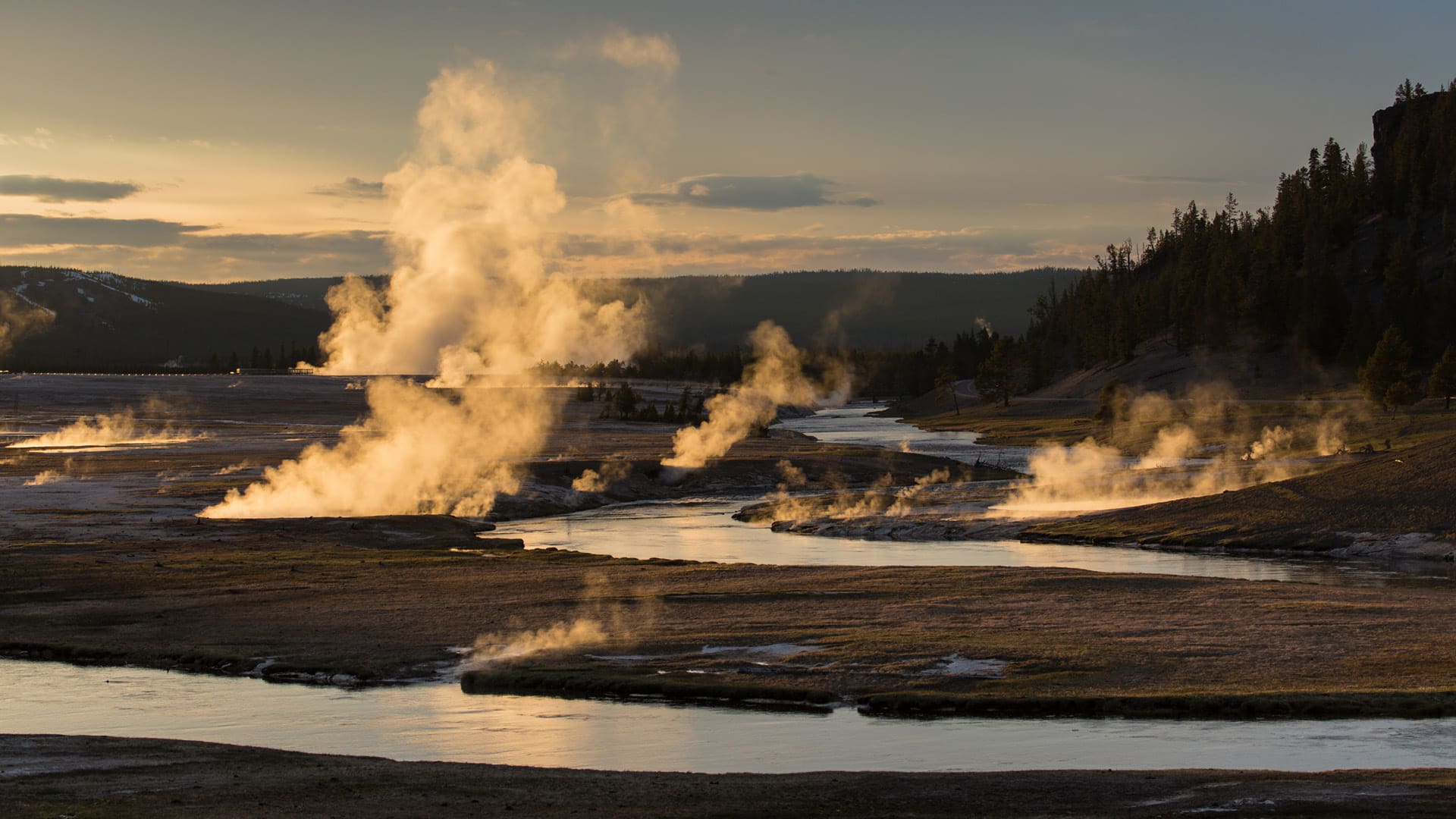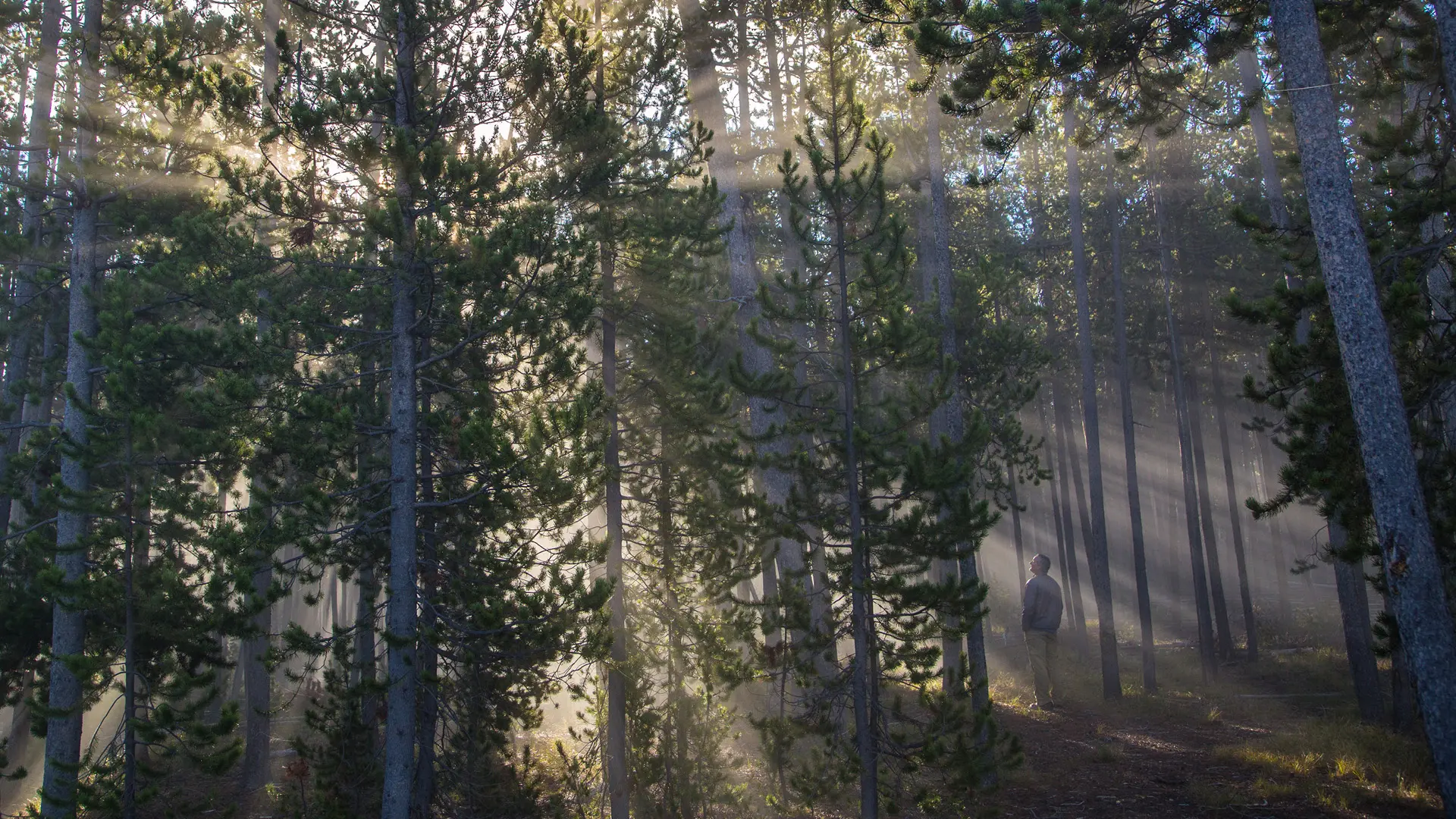The world’s first national park, Yellowstone sits atop a volcanic hotspot and straddles the borders of Wyoming, Idaho and Montana, where geysers, calderas and hot springs intersperse among canyons, rivers and lush grassland grazed by bison. The rewilding of Yellowstone is a classic case of the cascading ecological benefit caused by the reintroduction of a key predator. Wolves were reintroduced to Yellowstone National Park in the 1990s, causing a tremendous impact on the entire ecosystem that is still being felt today. Elk changed their behaviour and began to move on more quickly while grazing, allowing plants and trees, especially riverside willow, to grow. This in turn strengthened the soil along the riverbanks, and literally changed the flow of the rivers. Beavers were able to return to the ecosystem, supported by a larger source of food, which improved the health of the rivers further.
Every part of the ecosystem flourished in fairly unpredictable ways with this simple addition of a predator. Although proven so emphatically here, it remains a tough sell in other parts of the world, including in the UK, where the reintroduction of lynx is fiercely opposed by farmers across the country.
How to visit
A host of lodges can be found within the grounds of the national park, so you can stay surrounded by nature. Otherwise, nearby towns Jackson or West Yellowstone make good bases on the park’s perimeter. There is one small airport at West Yellowstone, but most travellers fly into Bozeman or Idaho Falls, or simply drive, which allows you to explore the park under your own steam once you’re there.









